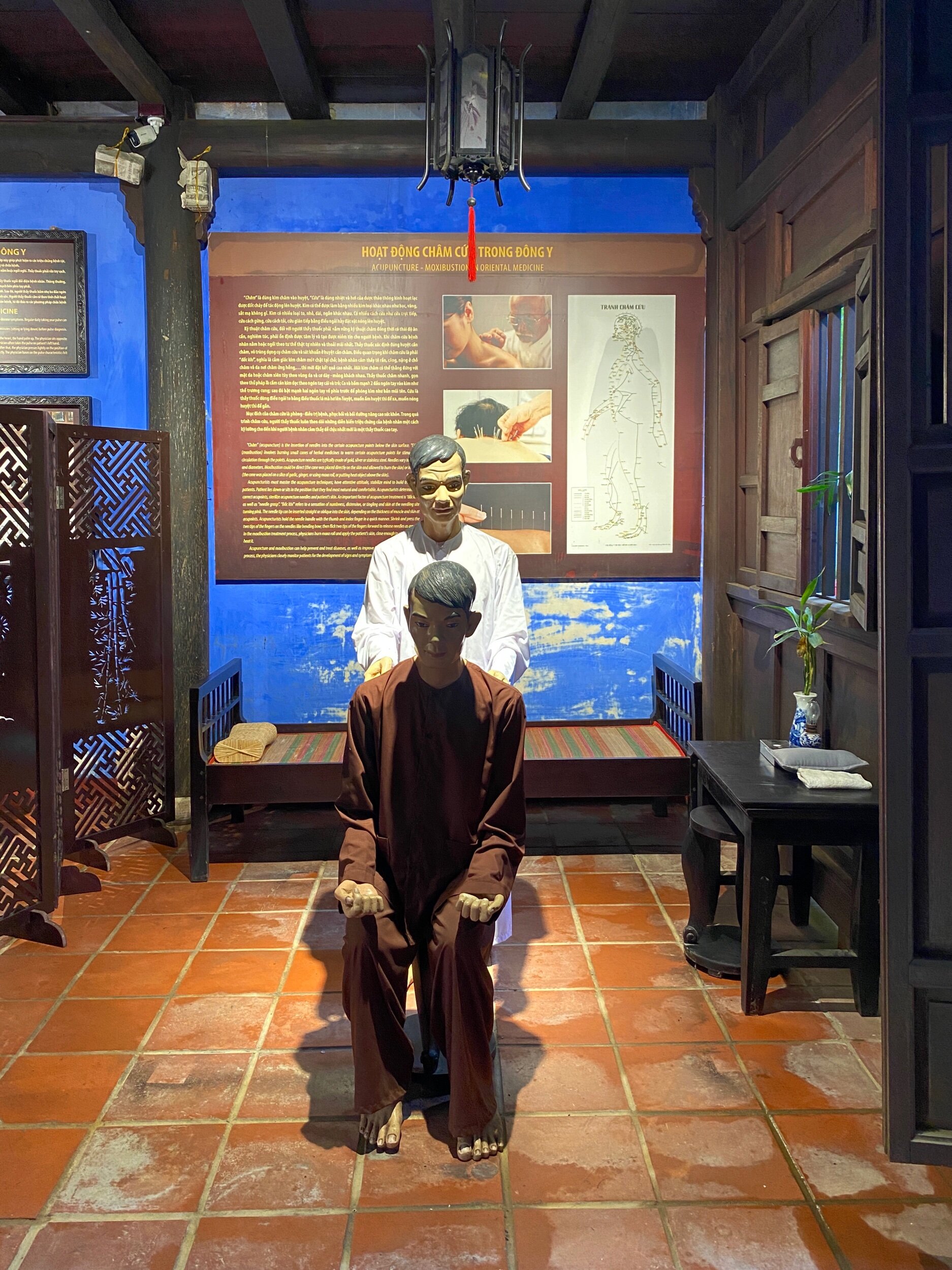There’s quite a bit I couldn’t get from the Museum of Traditional Medicine in Hoi An, because English signage is poor. However, I’ll outline the basic elements of the practice as best I can.
First, it’s important to know that Vietnamese Traditional Medicine is still practiced today. In the richest cities and the poorest hamlets, there are shops and stalls filled with innumerable dried herbs for the purpose. In Western countries, ‘traditional medicine’ has a reputation as snake oil, sold to hopeless old men with erectile dysfunction or gout. In Vietnam it is respected, studied alongside Western medicine in medical and pharmacy schools; there’s even a government sponsored Institute of Traditional Medicine. While some cures are demonstrably false (chewing betel preventing tooth decay, for example), others are still wholeheartedly believed in. The 66 volume encyclopedia of medicine written by Hai Thuong Lan Ong in the 18th century is still referenced today.
Around 2500 years ago, VTM began developing with some influence from Chinese Traditional Medicine, but some notable differences: first, VTM features very few animal products, apart from medicinal wines; second, in VTM recipes of fresh or dried and ground herbs consumed in the right proportions are meant to do the trick; there are none of the elaborate brewing and concocting processes common in CTM; lastly, and most obvious, different herbs grow in the warmer, wetter Vietnamese climates than the colder, northerly Chinese climates.
In Sino-Vietnamese, VTM has been called ‘the Southern herbology’, and CTM ‘the Northern herbology.’ In the 1100 years China colonized or dominated Vietnam, the colonizers respected the Southern herbology and would demand various taxes be paid in the form of VTM medicines. CTM and VTM share the concepts of chi, yin and yang, the five elements; they also share auxiliary therapeutic practices like massage and acupuncture.
From the 15th to 19th centuries, Hoi An became home to many Chinese traders who built their fortunes on spices and traditional medicines. The size and arrangement of this house shows how it was used less as a home and more as a small factory: store in the front; private appointments in the back; drying in the courtyard and on the balconies; grinding, mixing and packing prescriptions upstairs.
The artifacts, by their nature, aren’t much to look at: foot grinders, mortar and pestles, chopping knives, teapots, bowls. The museum does a great job of memorializing famous TVM doctors, so if it’s a topic that interests you, you can read succinct biographies. I can’t imagine myself trying TVM but never say never.



















